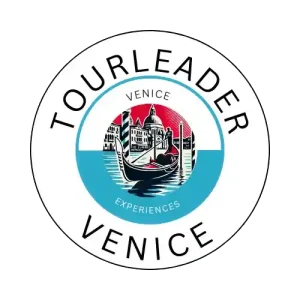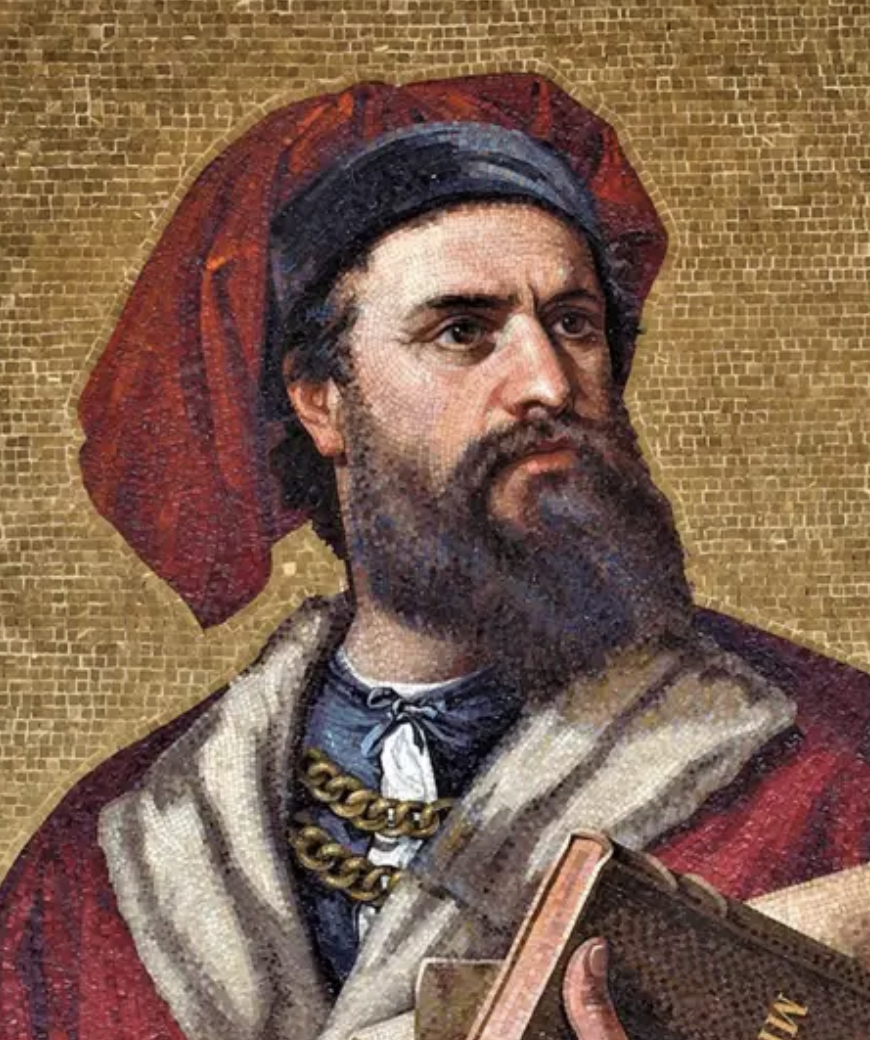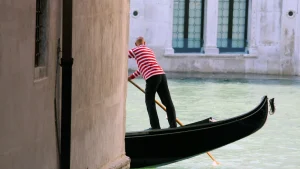Marco Polo: The Venetian Explorer Who Connected East and West | Tour Leader Venice
Before there were airplanes, maps, or GPS, there was a Venetian who dared to dream beyond the horizon. Born in 1254, Marco Polo — merchant, traveler, storyteller, and global citizen before his time — set out from Venice on a journey that would reshape the world’s imagination. His tales of distant empires, golden palaces, and silken roads turned curiosity into discovery, making him not just an explorer, but a symbol of what Venice has always stood for: adventure, openness, and the art of connection.
Today, walking through Venice’s narrow streets, it’s easy to forget that this floating city once launched one of humanity’s greatest travelers. But if you look closely, echoes of Marco Polo’s story are everywhere — in the spice-scented markets of Rialto, in the maritime warehouses along the Fondaco dei Tedeschi, and in the quiet courtyards of Cannaregio where his family once lived.
🧭 Early Life in Venice
Marco Polo was born into a family of wealthy Venetian merchants deeply involved in Mediterranean and Asian trade. His father, Niccolò, and uncle, Maffeo Polo, were seasoned travelers themselves — men who had already ventured deep into Asia long before Marco came of age. When the two returned to Venice after years abroad, they brought with them incredible stories of a vast and mysterious land ruled by the Mongol Emperor Kublai Khan.
In 1271, at just 17 years old, Marco joined his father and uncle on a second journey eastward. Their goal: to return to the court of Kublai Khan, fulfilling a promise to bring Western emissaries and knowledge to the Mongol emperor’s realm. That decision would turn the young Venetian into one of the most legendary figures of the Middle Ages.
Before setting sail, they would have stood on the same docks you can see today near the Grand Canal, where merchants loaded silk, spices, and glass onto galleys bound for Constantinople. Venice was already the beating heart of East–West trade — and the Polo family was at the center of it all.
🛤️ The Silk Road Expedition
In 1271, the Polos departed Venice on what would become a 24-year odyssey across deserts, mountains, and empires. Their route followed the legendary Silk Road, an ancient web of trade paths connecting Europe with China, Persia, and India. They crossed Anatolia, Persia, Afghanistan, and the forbidding Pamir Mountains — regions where few Europeans had ever set foot.
The journey was perilous. Sandstorms, bandits, extreme weather, and illness were constant threats. But along the way, Marco absorbed languages, customs, and ideas with an insatiable curiosity. He learned the Persian system of governance, studied Mongol diplomacy, and even picked up Chinese expressions. By the time he reached the Far East, he wasn’t just a Venetian merchant — he was a bridge between worlds.
To imagine their path today, picture leaving Venice’s lagoon aboard a ship, sailing east past Constantinople, then traveling overland through modern-day Iran and the Gobi Desert — a journey that would take nearly four years. That’s the spirit we channel in our Dolomites Tour — an adventure that captures the same Venetian courage to cross mountains in search of beauty and discovery.
🏯 At the Court of Kublai Khan
In 1275, after years of travel, the Polos reached Shangdu (known as Xanadu), the fabled summer capital of Kublai Khan. Kublai, the grandson of Genghis Khan, ruled the vast Mongol Empire — stretching from China to Eastern Europe — with wisdom, ambition, and curiosity about the Western world.
Marco quickly captured the emperor’s attention. Fluent in several languages and gifted with observation, he was appointed as a trusted emissary and administrator. He traveled across China on behalf of the Khan, visiting provinces like Yunnan, Tibet, and Cathay (modern-day Beijing). Through Marco’s eyes, Europe learned of paper money, coal, postal systems, and the grandeur of Chinese cities far larger and more advanced than anything in the West.
His descriptions of the imperial court — its silken robes, its golden palaces, and its organization — fascinated medieval Europe. The Khan’s capital, he wrote, was “so vast and magnificent that it surpasses any city in the world.” Even today, historians credit Marco’s detailed accounts as the first accurate portrayal of China and Central Asia ever recorded by a European.
📜 The Book That Changed Everything: “Il Milione”
After more than two decades in Asia, the Polo family finally returned to Venice in 1295 — nearly unrecognizable to their fellow Venetians. They had left as merchants; they came back as living legends, carrying silk, jewels, and — more importantly — knowledge.
Shortly after his return, Marco was captured during the war between Venice and Genoa. While imprisoned, he met a writer named Rustichello da Pisa, to whom he dictated his extraordinary adventures. The result was “Il Milione” (known in English as The Travels of Marco Polo) — a book that spread like wildfire across Europe.
It wasn’t just a travelogue; it was an encyclopedia of the East. It described cities with canals and stone bridges (like Venice!), animals like elephants and crocodiles, spices that colored food gold, and ships so large they dwarfed any in the Mediterranean. Skeptics dismissed some of his tales as fantasy, calling them “le bugie di Marco Polo” — Marco Polo’s lies. But centuries later, explorers such as Christopher Columbus carried copies of his book, using it as inspiration to seek new routes to Asia.
If you want to trace Marco Polo’s Venice today, join our Off the Beaten Path Orientation Tour — where we walk through the same labyrinthine alleys near his family home in Cannaregio, discovering where history and legend blur beautifully together.
🧳 What Marco Polo Brought Back from the East
Marco Polo’s return from the Silk Road marked one of the most significant cultural exchanges in history. He didn’t just bring home goods — he brought ideas, technologies, and stories that forever changed how Europeans saw the world.
- Geographical Knowledge: Polo’s descriptions of Asia filled in huge blanks on European maps. He charted routes across Persia, India, and China with remarkable accuracy for his time.
- Cultural Curiosity: His writings introduced Europe to Chinese cities with paved roads, postal systems, and organized bureaucracy — concepts that seemed utopian to 13th-century readers.
- Trade and Economics: Polo detailed silk production, paper currency, and the spice trade — information that helped Venice strengthen its own mercantile empire.
- Scientific Exchange: He described coal as a fuel source, salt mining techniques, and even the use of paper money — innovations unknown in Europe then.
- Culinary Inspiration: Though myths exaggerate his role, Polo’s exposure to Asian ingredients and spices helped spark Europe’s fascination with Eastern flavors that still season Venetian cuisine today.
Through his storytelling, Marco Polo transformed Venice from a city of merchants into a symbol of discovery. His book became the medieval equivalent of a viral sensation — read by scholars, sailors, and dreamers across Europe.
🍝 Did Marco Polo Bring Spaghetti to Italy?
It’s one of history’s favorite legends — that Marco Polo brought pasta from China and introduced it to Italy. Charming, yes — but not true. Archaeological and written records show that Italians were already making pasta centuries before Polo’s birth. The Etruscans, Arabs, and Sicilians all had early forms of dried noodles long before the Venetian traveler returned from the East.
What Marco did bring, however, was a greater awareness of Asian food culture — including the art of mixing ingredients like ginger, sesame, and spices into daily cooking. Those influences gradually filtered into Venetian cuisine, helping shape the city’s love of exotic flavors. Today, you can still taste that spirit in local dishes featured on our Cicchetti & Wine Tour — where we explore Venice’s spice routes through food and storytelling.
🍨 Did He Bring Gelato, Too?
Another delightful myth says that Marco Polo introduced gelato (Italian ice cream) to Italy after tasting frozen desserts in China. While the idea of Polo discovering an ancient version of ice cream in the East is romantic, gelato’s roots in Italy run much deeper.
Romans and Arabs were already mixing snow and fruit syrups long before Polo’s time, and by the Renaissance, Florentine and Sicilian artisans had perfected the creamy dessert we know today. Still, Polo’s writings did help fuel Europe’s curiosity about foreign culinary traditions, and his travels inspired the experimental spirit that eventually led to the gelato renaissance we celebrate now.
If you love history served sweet, our First Tiramisu Experience in nearby Treviso tells another delicious Venetian origin story — one that’s 100% real!
🌏 Marco Polo’s Legacy: Venice, Curiosity, and Connection
Marco Polo’s impact went far beyond his maps and stories. He embodied the Venetian way of life: fearless in exploration, adaptable to every culture, and endlessly curious about the world.
His tales opened Europe’s eyes to the possibilities of global trade and cultural exchange. In a sense, every traveler who visits Venice today — drawn by its art, architecture, and mystery — follows in Marco’s footsteps.
Walk along the Fondamenta della Misericordia at sunset, and imagine ships loading for distant lands. Listen to the chatter of merchants near the Rialto Market, where spices from Asia once arrived. You’ll understand that Venice itself is a living museum of exploration — and Marco Polo is its guiding star.
🚶♂️ Follow in Marco Polo’s Footsteps with Tour Leader Venice
Want to experience Venice the way Marco Polo once did — full of wonder and discovery? Join us on a private walking tour that uncovers the hidden history of the Venetian Republic, the Silk Road connections, and the neighborhoods where the Polo family lived.
Or sail through Venice’s canals on a private boat tour — our modern echo of Marco’s journeys through rivers, ports, and empires. For the truly adventurous, extend your trip with a Padova & Palladian Wonders Day Tour, exploring the region that once fueled Venice’s thirst for innovation and art.
Marco Polo’s journey began in Venice — and every great Venetian adventure still does. Ready to start yours?
FAQs for Marco Polo: The Venetian Explorer Who Connected East and West
Where was Marco Polo born, and where did he live in Venice?
Marco Polo was born in 1254 into a family of Venetian merchants in the Cannaregio district, near what is now the Corte del Milion — named after his famous book Il Milione. You can still trace his story through the Off-the-Beaten-Path Orientation Tour, which visits the area where the Polo family once lived and traded, revealing the everyday Venice that shaped one of history’s greatest explorers.
What did Marco Polo really bring back from Asia?
While legends say he introduced pasta or gelato to Italy, Marco Polo’s true legacy was knowledge and cultural exchange. He brought back maps, technologies, and stories from Asia — including the use of paper money, advanced postal systems, and trade routes that reshaped Europe’s worldview. To explore how Venice’s global connections evolved, join our Venice Tour of the Lagoon – Discover the Hidden Gems, a journey through the city’s maritime past and trading heritage.
How can I experience Marco Polo’s Venice today?
Walk through Rialto Market, where exotic spices once arrived from the East, and stroll along the Fondaco dei Tedeschi, once the center of merchant life. For a more immersive experience, book our Private Grand Canal & Hidden Canals Tour — a modern echo of Polo’s voyages — or pair it with our Cicchetti & Wine Tour to taste the lasting influence of Venice’s spice trade.






